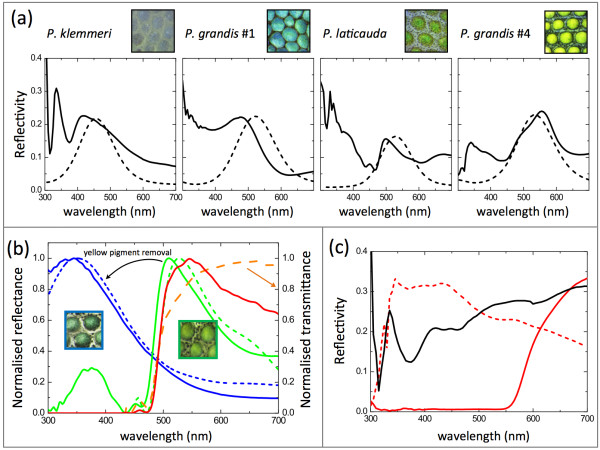Figure 3.
Experimental and modeled reflectivities of Phelsuma skin. (a) Measured skin reflectivities (solid lines) after removal of pigments (skin colors varied from deep-blue to yellowish-green) compared with modeled reflectivities (dashed lines) based on crystal size and spacing (Table 1). For Phelsuma grandis number 4, the crystal geometry parameters were taken from the P. grandis number 1 neck sample that exhibited a similar structural color. Note that the UV peaks in the measured reflectivities are probably caused by scattering on melanosomes, on iridophore crystals, or on dermal collagen fibers. (b) Normalized reflectivity of green skin before and after yellow pigment removal (green and blue solid lines, respectively). Modeled multilayer responses for a crystal size of 70 nm and a spacing of 30 nm (assuming a standard deviation of 13 nm) are also shown with (dashed green line) and without (dashed blue line) a 3 μm thick pigment layer on top. The direct product of structural blue reflectivity with normalized yellow pigment transmittance (orange dotted line) generates the plain red line, confirming the mechanism of structural color filtering by the top pigment layer. (c) Reflectivity measured on P. grandis white skin (black line) and on red skin before (red solid line) and after (red dashed line) red pigment removal. Reflectivity intensities of ordered and disordered iridophores are comparable.

